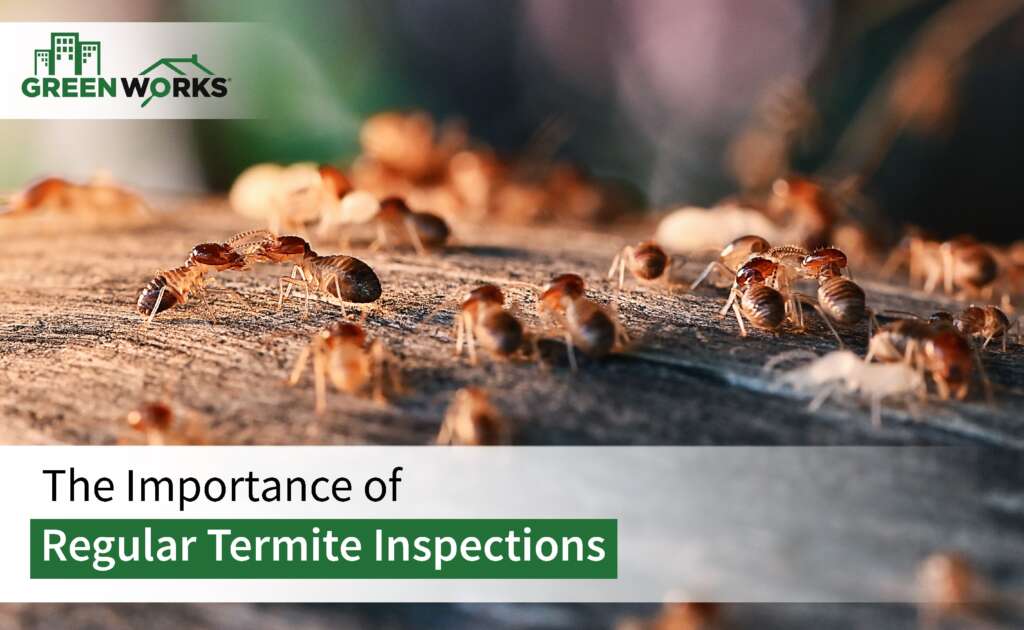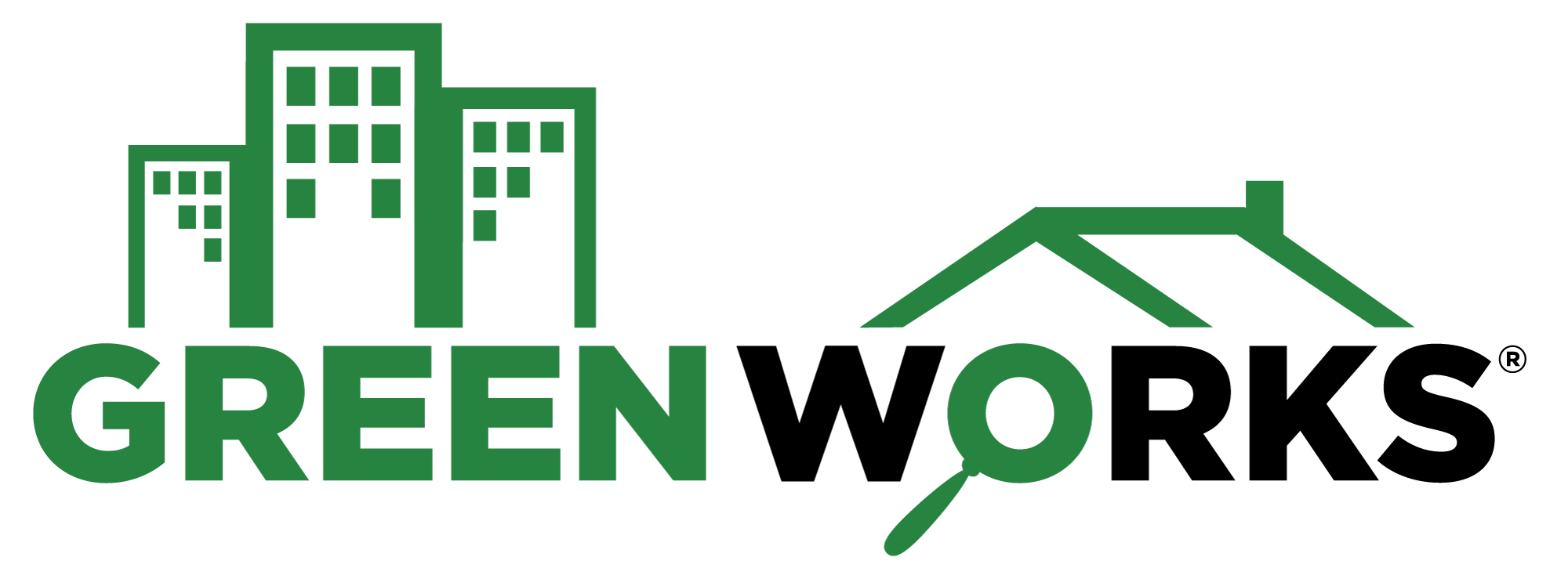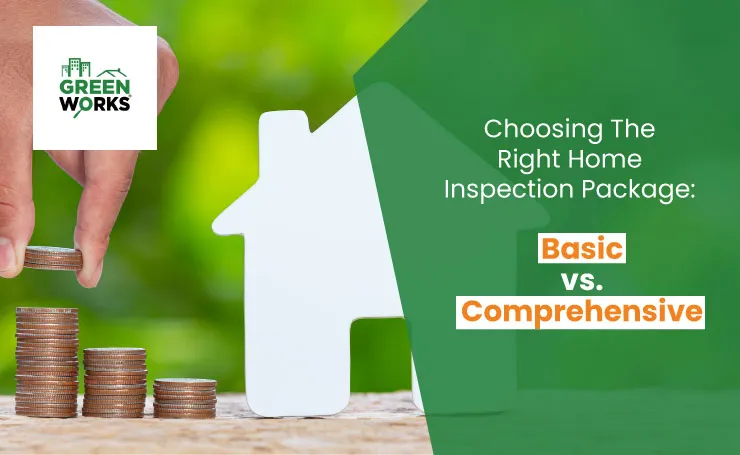Posts

The Importance of Regular Termite Inspections
There is a reason termites are called “silent destroyers”. They cause extensive damage to the property, sometimes concealed until it is too late.
It is essential to conduct regular termite inspections to protect your property from these relentless pests. These inspections help identify termites and ensure preserving your property’s value.
In this blog, we will talk about how important termite prevention is. We will also talk about how termite inspections work and their significance.
How Important Is Termite Prevention?
We can not emphasize enough about the importance of termite prevention. Not preventing your house from termites can have a variety of consequences. These range from costly repairs to significant structural damage.
Below are some critical reasons that make termite prevention an important part of homeownership.
Preserving Property Value
One of the most compelling reasons for termite prevention is the preservation of property value.
A termite infestation can lead to substantial structural damage. This decreases the value of a home.
Often, potential buyers don’t want to buy a property with a history of termite issues. Not to mention, A property with a compromised structure is the worst choice for buyers.
Thus, investing in termite prevention measures lets homeowners maintain the value of their property. They can attract potential buyers or tenants without fearing rejection or low property value/rent.
Avoiding Costly Repairs
Termite damage can be extensive, and the repairs can be financially burdensome. You surely don’t wanna get overburdened by the cost of fixing structural damage, replacing compromised wood, and treating the infestation all at once.
Termite prevention is a cost-effective approach you can use in this case. They can save homeowners from the heavy financial burden of termite infestations.
Protecting the Structural Integrity
If left unchecked, termites can compromise a home’s structural integrity. This weakens load-bearing elements like wooden beams and joists. Termite prevention ensures that the structural integrity of a property remains intact. Eventually, it prevents potential hazards and costly repairs.
Preserving Wooden Fixtures and Furnishings
Termites aren’t limited to the structural components of a home. They can also damage wooden fixtures, cabinets, and furniture.
Prevention measures help safeguard these wooden elements. Further, you can also preserve the aesthetics and functionality of the property’s interior.
Minimizing Health Risks
Termites are not directly harmful to human health. However, the chemicals used in termite treatment can pose health risks. This is especially true if an infestation is not detected and addressed promptly. Termite prevention reduces the need for extensive chemical treatments. Thus minimizing potential health hazards for occupants.
Maintaining Peace of Mind
Homeownership should come with peace of mind. Knowing that your property is protected against termite infestations helps you. You can rest assured that your investment is secure. Preventive measures ensure that your home is less susceptible to this destructive pest.
Responsible Property Management
For property owners, termite prevention is critical to responsible property management. Regular inspections and preventive measures demonstrate your commitment to your house. It also reflects your efforts to maintain a safe and habitable property for tenants. Eventually, it ensures their well-being and comfort.
How Do Termite Inspections Work?
Termite inspections are a great way to take preventive measures against termites. These inspections help identify signs of termite activity, damage, and vulnerabilities.
Understanding the importance of termite inspections helps you safeguard your investment. Moreover, it also helps in ensuring a termite-free environment.
It is recommended that your property be inspected for termite activity annually. However, areas with a high risk of termite activity shall have inspections every six or four months.
If you are curious how these inspections work, below is a breakdown of their process.
Visual Inspections
Visual inspections are the foundation of termite assessments. During these inspections, trained professionals thoroughly examine the interior and exterior of the property. They search for signs of termite activity. They look for visible damage, mud tubes, exit holes, and evidence of swarmers (reproductive termites).
Use of Termite Detection Tools
To enhance the accuracy of inspections, professionals may employ tools. These include moisture meters and borescopes. Moisture meters detect areas of excess moisture, which can indicate termite activity. This is because termites need moisture to thrive. On the other hand, borescopes are used to inspect wall voids and other hard-to-reach spaces for signs of termites.
Inspection of Vulnerable Areas
Inspectors pay particular attention to areas prone to termite infestations. This includes the following:
- Foundation
- Crawl spaces
- Basements
- Wooden structures
- Any landscaping elements in proximity to the property
Inspectors carefully assess the vulnerabilities, such as wood-to-soil contact, untreated wood, and cracks in the foundation.
Use of Termite Bait Stations
In some cases, termite bait stations may be placed around the property. These stations contain bait that is attractive to termites. Inspectors periodically check these stations for signs of termite activity, which can help in early detection and treatment.
Professional Assessment
Professional termite inspectors have the expertise to interpret their findings accurately. They can recommend the appropriate course of action if any evidence of termite activity is detected. This can range from preventive measures to localized treatment to fumigation.
Report and Documentation
After the inspection, the professional provides a detailed report of their findings.
This report includes information about any identified termite activity and existing damage. It also includes recommended actions. If you’re considering a property purchase, this report can be crucial in negotiations. Further, it ensures that the property is termite-free.
Preventive Measure
A key aspect of termite inspections is the identification of vulnerabilities. These vulnerabilities can be addressed to prevent future termite infestations. By rectifying these issues, homeowners can minimize the risk of termite problems.
A Termite-Free Future: How Greenworks Inspections Can Help
In conclusion, regular termite inspections play a crucial role in maintaining the structural integrity of properties. You can prevent costly damage by identifying and addressing termite infestations in their early stages. And you can also preserve the value of your investments.
Greenworks Inspections is committed to safeguarding your property and providing expert termite inspection services. Don’t wait until it’s too late. Schedule a termite inspection with Greenworks today and ensure a termite-free future for your property.




